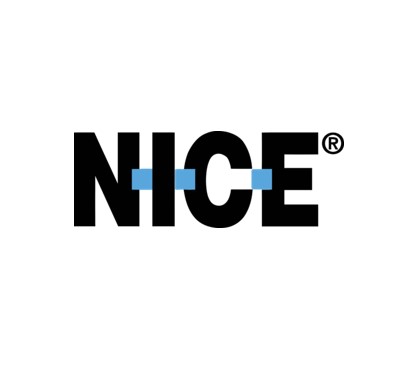Enhancing Customer Engagement Across Multiple Touchpoints
Digital Channels in NICE CXone: Enhancing Customer Engagement Across Multiple Touchpoints
NICE CXone's Digital Channels offer a comprehensive suite of communication tools, enabling organisations to manage interactions across various messaging platforms, social media, SMS, email, and more. These channels are designed to deliver a seamless, omnichannel customer experience, allowing agents to engage with customers across their preferred digital platforms with ease. Here’s a closer look at NICE CXone’s Digital Channels and their key features.
Key Features of Digital Channels
-
Unified Digital Inbox
Digital Experience in NICE CXone uses the concept of a digital inbox, where all digital interactions—whether from social channels, messaging platforms, SMS, chat, or email—are routed into the agent's inbox. This approach streamlines communication by allowing agents to manage interactions from all channels in one place, reducing complexity and enhancing efficiency. -
Flexible Channel Integration
Adding digital channels to your contact centre is easy with NICE CXone. While some channels can be configured by the user, others require assistance from an account manager or the Digital Experience team. The platform also offers Bring Your Own Channel (BYOC), allowing you to integrate messaging platforms that aren't natively supported, further enhancing flexibility. -
Customisable Routing and Skills
After adding a digital channel, organisations can customise it by selecting specific Studio scripts and digital skills for routing interactions. This allows businesses to tailor the experience based on customer needs and optimise resource allocation. -
Permission-Based Access
To ensure proper handling of digital interactions, agents must have the appropriate permissions assigned to their roles. Additionally, agents are assigned to specific routing queues or digital skills that determine which interactions they handle. This role-based access ensures that agents only receive interactions suited to their expertise and workload.
Types of Digital Channels Supported
NICE CXone supports a variety of digital channels, catering to both social and messaging platforms. Here are some of the key channels:
-
Social Channels
- Facebook (Social and Messaging): Agents can interact with customers on Facebook by responding to comments, managing posts, and engaging through Facebook Messenger. Direct messages, including images and attachments, can be handled, with replies allowed up to seven days after the initial message.
- X (formerly Twitter): CXone supports interactions on X, including public posts and direct messages. Agents can manage responses to tweets and direct messages.
- Instagram (Social and Messaging): Agents can reply to posts and comments on Instagram. Direct messages, including story replies, can be managed, but publishing content is not supported.
- LinkedIn: CXone enables the management of public posts and comments on LinkedIn company pages, but publishing content is not supported.
- YouTube: Interactions from YouTube videos and comments are synced every hour, enabling agents to engage with public content on owned accounts.
-
Messaging Channels
- WhatsApp: Agents can send and receive text and multimedia messages on WhatsApp. The platform supports both inbound and outbound messaging using approved templates, making it a versatile communication tool.
- Apple Messages for Business: This channel allows direct messaging with customers using text and media. It supports rich features like interactive templates for tasks such as appointment scheduling and payment processing.
- LINE, Telegram, and Viber: These messaging platforms offer robust support for direct message interactions, allowing agents to reply with or without attachments. However, proactive outbound messages are not supported on these platforms.
- WeChat: Though WeChat is not directly integrated with CXone, organisations can use the BYOC setup to enable interaction via WeChat, sending both messages and attachments.
-
Collaboration Platforms
- Microsoft Teams and Slack: These collaboration tools can be integrated for technical support interactions. CXone provides agents with the ability to respond to customer queries sent through these platforms, making it a great choice for organisations already using these tools internally.
-
Bring Your Own Channel (BYOC)
The BYOC functionality allows businesses to connect any other messaging or social platform not natively supported by CXone. This customisation is facilitated through middleware that integrates the chosen platform with CXone via APIs.
Rich Content and Interactive Features
NICE CXone supports a variety of rich content for enhanced interaction, ensuring that agents can offer more engaging, interactive, and personalised experiences for customers. Channels like Apple Messages for Business and Digital Chat support advanced features such as adaptive cards, quick replies, and forms for scheduling or making payments.
- Rich Link and Quick Replies: These features enhance the interaction by providing clickable options that customers can use to select responses or actions.
- Adaptive Cards and Forms: Available on some messaging platforms, these features enable the presentation of rich, structured data and allow customers to complete tasks directly within the messaging interface.
However, not all digital channels support these advanced features. For example, channels like Email and Facebook Messenger have more limited support, with some features requiring fallback text or manual configurations.
Conclusion
With NICE CXone’s Digital Channels, businesses can manage interactions across multiple platforms while ensuring consistent and personalised customer service. The integration of messaging and social media channels, coupled with powerful tools for agent collaboration and rich content support, makes it easier than ever to stay connected with customers and provide exceptional service at scale. Whether handling social media interactions, SMS, email, or messaging platforms, CXone’s digital capabilities ensure that customer communications are seamless, efficient, and highly engaging.

